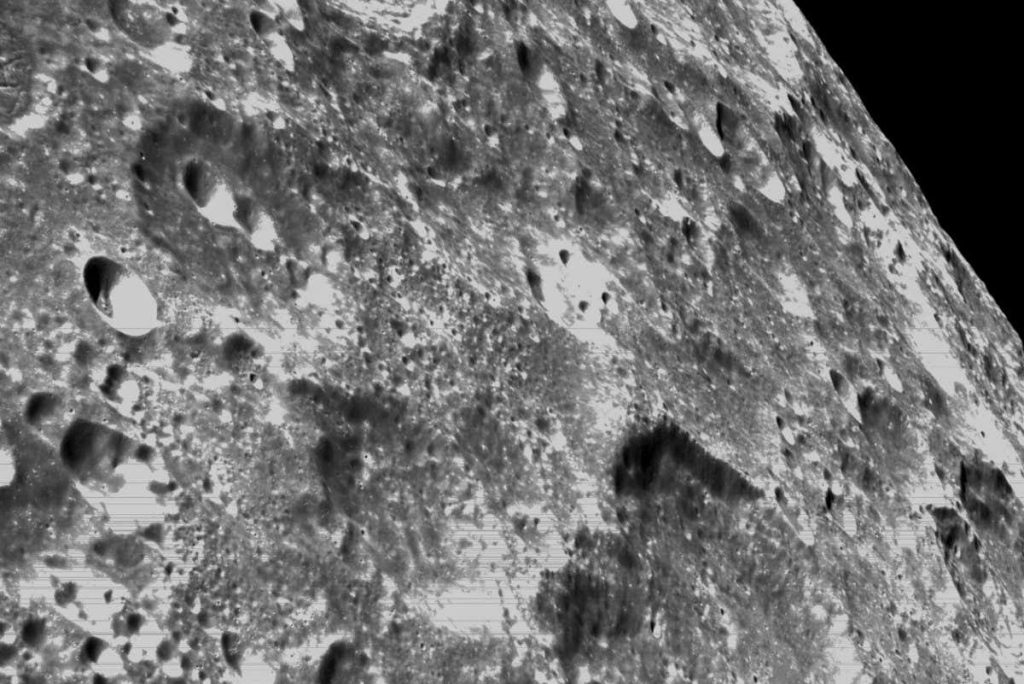The Orion capsule has made its closest fly-by of the moon and sent back detailed images of its surface and of the spacecraft rounding the far side of the moon
Space 23 November 2022
By Leah Crane
Orion’s optical navigation camera captured black-and-white images of craters on the moon
NASA
NASA’s Orion capsule has sent back stunning pictures from its maiden voyage. The pictures show the spacecraft flying just 130 kilometres above the moon’s surface, the closest approach of its entire mission.
Orion launched towards the moon atop the Space Launch System (SLS) rocket on 16 November. This test flight, called the Artemis I mission, will take Orion into orbit around the moon and then back home, where it will splash down in the Atlantic Ocean on 11 December.
During the flyby, Orion passed behind the moon, putting it briefly out of contact with its operators and allowing it to take images of the moon’s far side, which is never seen from Earth. Above is an image taken by the spacecraft’s navigation camera as it neared the lunar surface, and below is a snap from one of the cameras on Orion’s solar arrays taken as the capsule passed over the far side of the moon.
Advertisement
The far side of the moon just beyond the Orion spacecraft. This image was taken by a camera on the tip of one of Orion’s solar arrays
NASA
“The mission continues to proceed as we had planned, and the ground systems, our operations teams, and the Orion spacecraft continue to exceed expectations,” said Artemis I mission manager Mike Serafin in a 21 November press conference.
Now that the close flyby is done, the capsule is flying further from the moon, preparing to enter what’s called a distant retrograde orbit on 25 November. The final orbit will be about 92,000 kilometres from the lunar surface, and will allow Orion to use less fuel than a closer orbit while it circles the moon for six days.
Just after it enters lunar orbit, it is expected to surpass the record for the largest distance travelled from Earth by a spacecraft designed for humans – a record that Apollo 13 set at about 400,000 kilometres in 1970. If all goes well with this test flight, the Orion capsule will carry humans around the moon in 2024 in the Artemis II mission, and in Artemis III the capsule will be used to take astronauts back to the surface of the moon for the first time since Apollo 17 in 1972.
Sign up to our free Launchpad newsletter for a voyage across the galaxy and beyond, every Friday
More on these topics:

